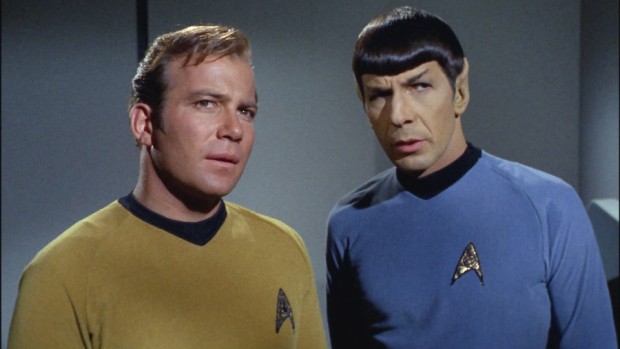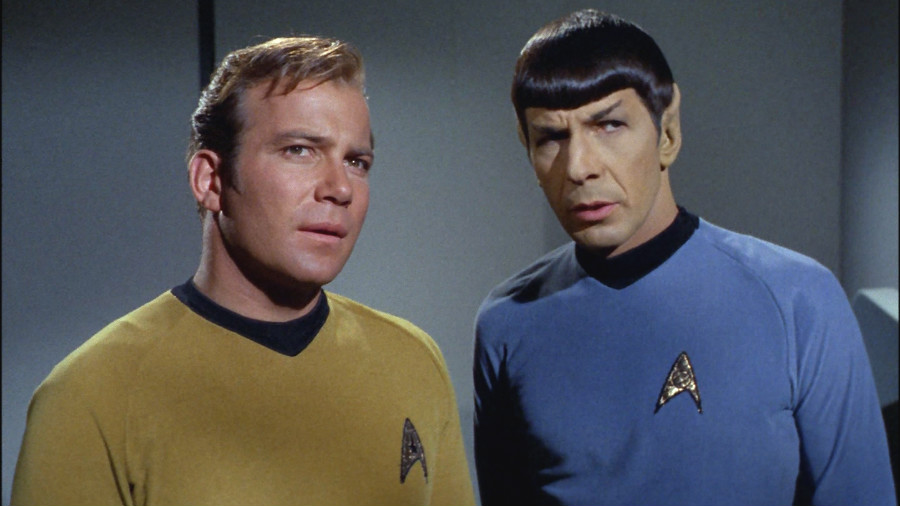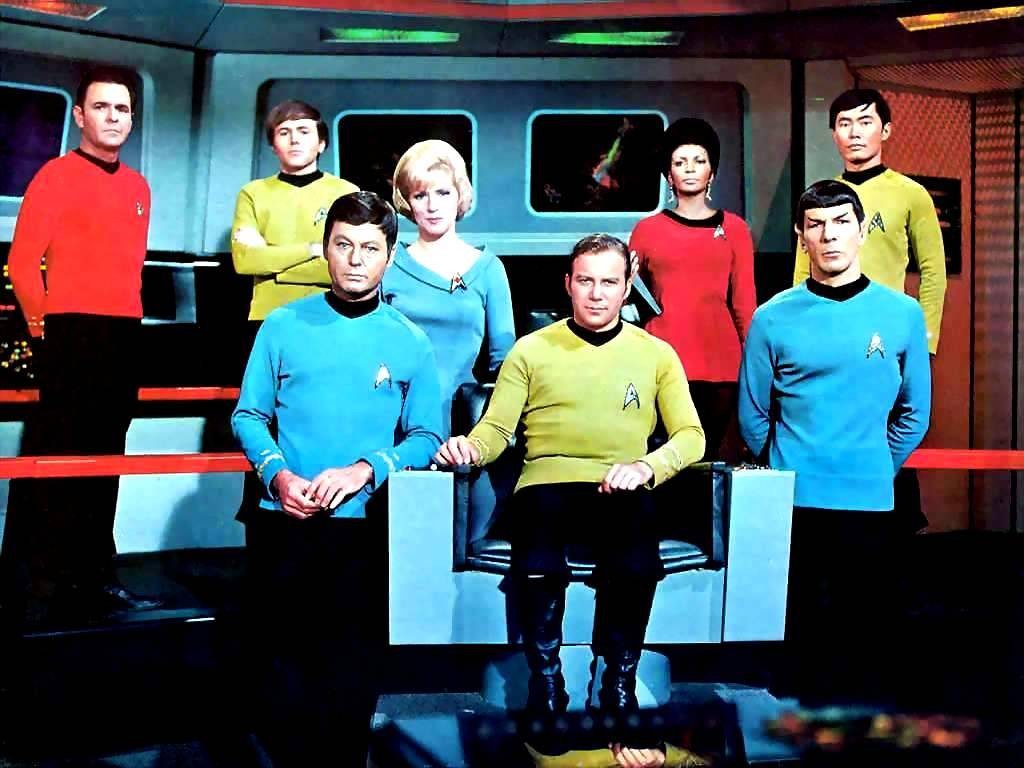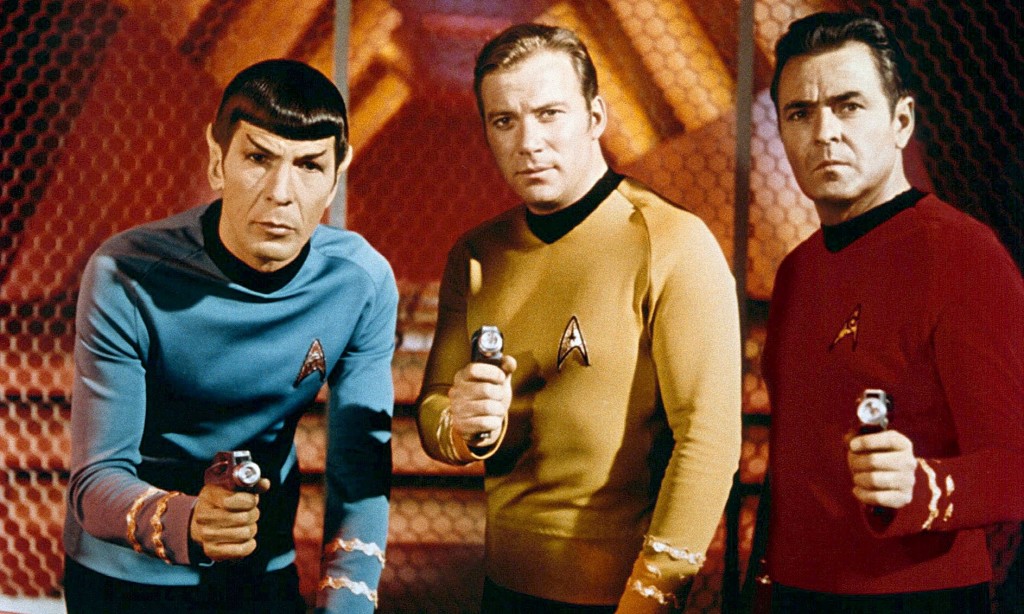In June 1969, US television viewers were treated to the unforgettable spectacle of William Shatner portraying a woman inhabiting his body. The final episode of Star Trek, ‘Turnabout Intruder’, featured Captain Kirk and his crew struggling to defeat a mentally unstable woman who had captured his body, planning to take over the USS Enterprise, and wreak havoc upon all and sundry.
Shatner, never the most… subtle… of performers, threw himself into the role, straining to capture the full spectrum of emotions of a woman, trapped in a man’s body. Like I say, the results are pretty spectacular, for all the wrong reasons.
Star Trek had set out its stall three years earlier as a cerebral, progressive, and intelligent look at humanity’s future, and ended up with Captain Kirk attempting to strangle someone, whilst telling them, “Believe me, it’s better to be dead than to live alone in the body of a woman.”
All said, it was a fairly sad ending to something which had once aimed so high.
It had never been an easy ride for Star Trek, though. The show was created by producer and writer Gene Roddenberry, who sold it to the television network as “Wagon Train to the stars”, referencing a popular western of the time. Expecting adventure, morality, derring-do, and a bit of action, they were instead confronted with chilly cerebral story-telling, highbrow concepts, and a man who looked like Satan as one of the leads. They pulled the plug on Star Trek after seeing the pilot episode, but eventually relented, letting Roddenberry have an unprecedented second crack at the whip for his space series.
For his second pilot, Roddenberry kept the Satanic-looking character, Leonard Nimoy’s Spock, and cast William Shatner in the lead, replacing the older, more thoughtful Jeffery Hunter. Shatner provided the requisite action chops as Captain James T. Kirk, but also a lightness of touch, a sense of humour and humanity that anchored the show even when it was at its most far out.
And as Star Trek picked up steam, it did get pretty far out, man.
The show’s central premise found us joining the crew of the USS Enterprise as they undertook a five year long mission to explore space, and foster relations between themselves and other species. Representing the peaceful and enlightened United Federation of Planets, their mission of discovery was frequently thwarted by the machinations of the Klingon Empire, a warlike species whose meddling occasionally bordered on outright hostility.
It was, of course, an allegory for relations between the US and the USSR in the 60s. The Cold War was still in effect, with both superpowers locked in an arms race which was – ironically enough – directly tied into the space programme. As both countries built bigger and more powerful weapons, that same technology pushed forward advances in space travel, as they raced to the moon.
But where an air of fear and suspicion clung to contemporary politics, the multi-racial crew of the Enterprise existed in perfect harmony. Roddenberry wanted to portray a future where mankind had essentially sorted out all its problems, and learned to live as one species, rather than the fractured states of the time. But this harmony had come with a terrible price – the show made references to a deadly nuclear conflict in the 1990s which had been the catalyst for uniting under one flag.
Of course, the universe is a big place, and over the course of the show’s 79 episodes, Kirk & co. encountered plenty of rogues, meddlers, and miscreants to keep things interesting. From powerful beings who struggled to understand the concept of ‘humanity’, to roguish scamps who cause gentle havoc, Star Trek kept the philosophy as a backdrop to tightly scripted action adventure stories.
And with it being the swinging 60s, space was a pretty groovy place to be. Star Fleet seemed to have a uniform policy that was definitely pro-miniskirt, whilst colonists on distant planets selected the go-go dancer’s attire as their clothing of choice. The darkness of space seemed to be positively full of glowing objects, flashing lights, and strange shapes, resembling a Pink Floyd lightshow, rather than anything NASA were discovering.
But those teething problems that plagued the show’s beginnings never really went away. Star Trek might have been popular with viewers, but the network executives were sceptical. It wasn’t a cheap show to make (regardless of what it looked like), and its curious mixture of the intellectual and the physical didn’t always gel. For every ‘Amok Time’, where Spock finds himself undergoing a kind of Vulcan puberty, exploring the deep bonds of friendship, society’s adherence to ritual, and the trauma of teenage life, there’s a ‘Spock’s Brain’, where Spock gets his brain stolen. Which is less fun than it might sound.
The show faced the axe on numerous occasions, but was saved primarily through the fan response. Upon hearing that the journey was coming to an end, viewers began writing to the network in their thousands, making a convincing case for the show to stay on the air. In a sense, this is an early form of crowdfunding, and the faltering first steps of obsessive fandom, something that would mature into a multi-million dollar proposition.
But by the third season, the writing was on the wall, and with a reduced budget, a tighter schedule, and an unforgiving new timeslot, even an enthusiastic letter writing campaign couldn’t save Star Trek. The series came to an end in June of 1969, a month before Neil Armstrong went on a trek of his own, and made his giant leap for mankind. Maybe the fact that mankind had touched the stars for real took the shine of Kirk’s many achievements.
However, the ball was rolling, and over the course of the 70s, Star Trek continued to draw in viewers as repeats became a staple of television. The crew struggled to various degrees with typecasting, as audiences continued to see them as Star Fleet officers, rather than actors. And when George Lucas’ space saga Star Wars dominated the box office in 1977, Paramount Pictures looked into their proverbial attic, dusted off Star Trek, and stuck it on the big screen, with lucrative results.
Star Trek was arguably stronger in the 1980s than it had been in its 60s heyday, with the spin-off series, The Next Generation, eventually escaping the shadow of the original series, and possibly even eclipsing it. The movies did serious business at the box office, and after a brief lull in the late 90s, a 2009 reboot found a new cast taking on the roles of Kirk, Spock, Bones, and company.
But the core of it all remains those original 79 episodes, 79 stories which are by turns fascinating, surprising, creaky, uneven, exciting, embarrassing, and moving. And in the 50 years since that first episode, Star Trek has become burned into the very heart of popular culture, a much loved, frequently derided curiosity which has inspired millions of people along the way.
Whether there’s another 50 years of Star Trek to look forward to remains to be seen. The kind of intelligent drama that Roddenberry strove for is commonplace now, and with its wide-eyed sincerity, Star Trek occasionally seems somehow naive in its utopian outlook. We’ve all seen evidence of how destructive the world can be, and simply sticking a bunch of different nationalities together on the bridge of a spaceship isn’t enough to suggest global harmony.
But at its absolute best, Star Trek thrived as a mirror to the dangers and darkness of our own world, and maybe there’s still a place for a show which imagines what we’re all like, long after we’ve learned to live in peace?
As humanity faces an increasingly uncertain future, with divisions between nationalities, genders, and sexual preferences, and with resources dwindling, perhaps Gene Roddenberry’s vision of a future utopia can once more become a blueprint for our continued existence on this planet, and others.
Either way, happy birthday Star Trek. May you live long and prosper. Steven Rainey









